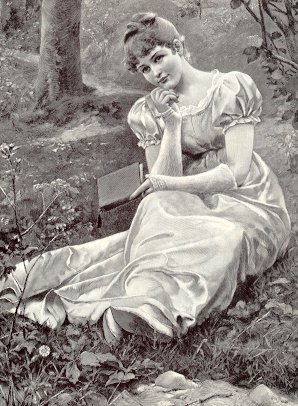Comfort
Today, thoughts about comfort -- in an open field. The University of Houston's College of Engineering presents this series about the machines that make our civilization run, and the people whose ingenuity created them.
Here's something I'll bet you never thought of as invention. It's comfort. Three hundred years ago the word comfort meant to strengthen. In the 1700s we began changing that to the modern meaning of physical well-being. That theme began dominating furniture and interior design. Yet comfort is such a deceptive concept -- one we still struggle with. Think about chairs.
Chairs were once little more than authority symbols. Today we try to design chairs for absolute comfort in, say, reading a book. But the chairs you really like aren't the ones that best serve reading. That's because chairs serve many purposes.
You want to be able to sit forward attentively and give full attention to a friend. You want to drink coffee while you read. You want to curl your feet under you, slouch, put your head back. I like to use my computer keyboard with the cat in my lap.
The well-being of comfort has too many dimensions. One industry provided its employees with elegant furnishings. Then experts asked what they liked and disliked about their work environment. The employees criticized most of it.
They had problems with lighting, sound, and air quality. They complained they didn't have enough intimacy, and they didn't have enough privacy. Of course privacy contradicts intimacy.
Comfort, it seems, is shaped in subtler ways than we realize. Witold Rybczynski says that analyzing comfort is like trying to describe an onion by detailing each successive layer. Comfort means more than removing pain or granting privacy. It means creating well-being. And that has so many dimensions.
Now I sit writing in the field where we all run our dogs. My back's against a tree. Dogs swirl about. No chair, no pillow. Yet I feel good. Five other dog owners stand a hundred feet away. They chat just within earshot. I'm alone and focused. Yet I have friends -- community. My foot's bent at the wrong angle. I'm not even free of pain. But I'm comfortable.
Thomas Jefferson loved comfort. And he understood it in this broader sense. He tinkered with Monticello during his whole life. He chose its location. He formed a harmony of physical and mental comfort. He designed each element to serve his convenience and well-being -- dumb waiters, special tables and chairs, book shelves. Jefferson, of course, was the quintessential amateur. Of course he knew how to construct comfort.
In the end, Rybczynski tells us, "Domestic well-being is too important to be left to experts; it is ... the business of the family and the individual." Perhaps real comfort is, after all, trying to write with a dog's nose in my ear.
I'm John Lienhard, at the University of Houston, where we're interested in the way inventive minds work.
(Theme music)
Rybczynski, W., Home: A Short History of an Idea, New York: Penguin Books, 1986. (For more on Rybczynski's ideas about the design of the home, see Episode No. 808.)
Adams, W. H., Jefferson's Monticello, New York: Cross Timbers Press, 1983.
See also the Oxford English Dictionary entries under "comfort" and related words. I'm grateful to Judy Myers, UH Library, for providing Rybczynski's fascinating book and suggesting the topic.

clipart